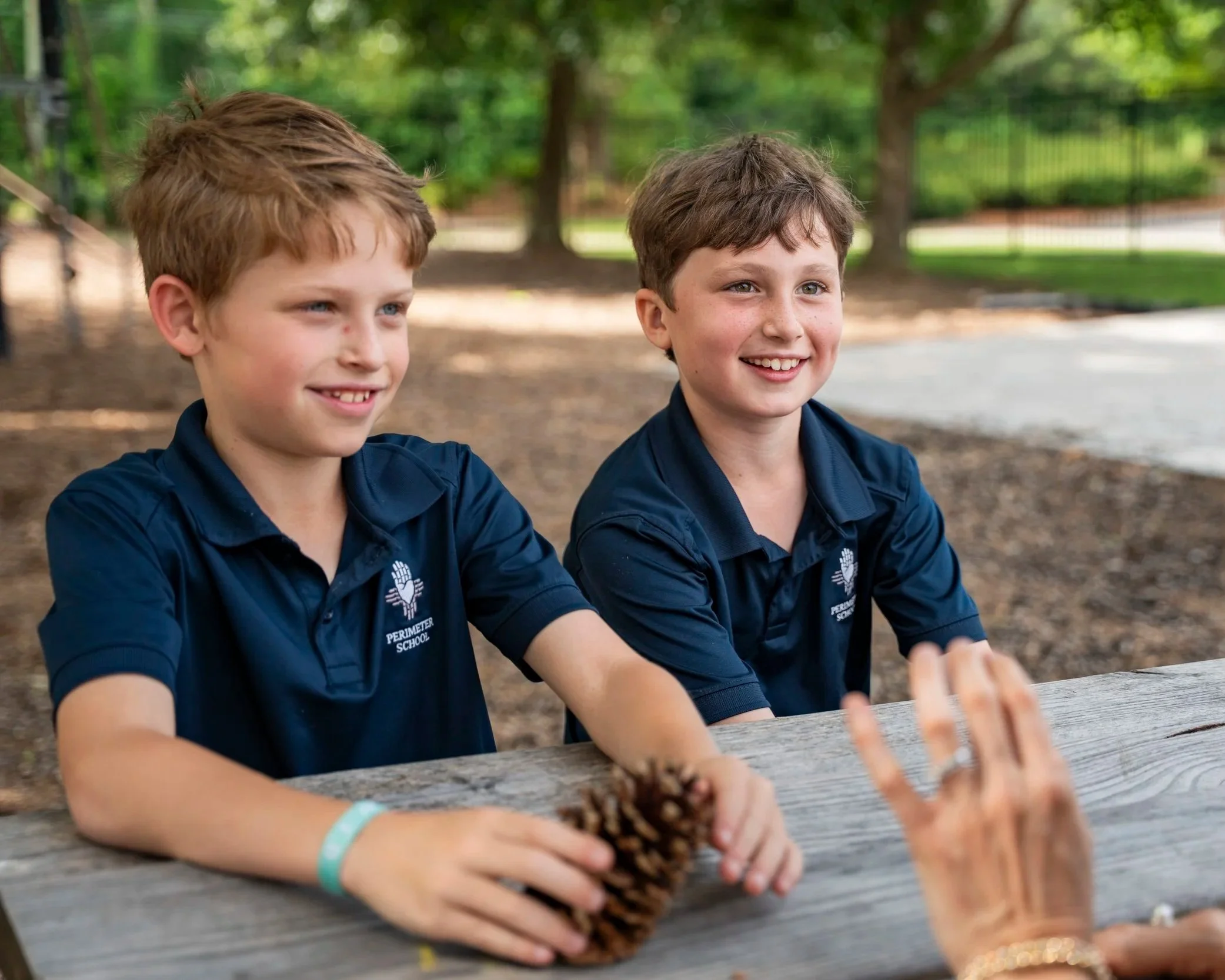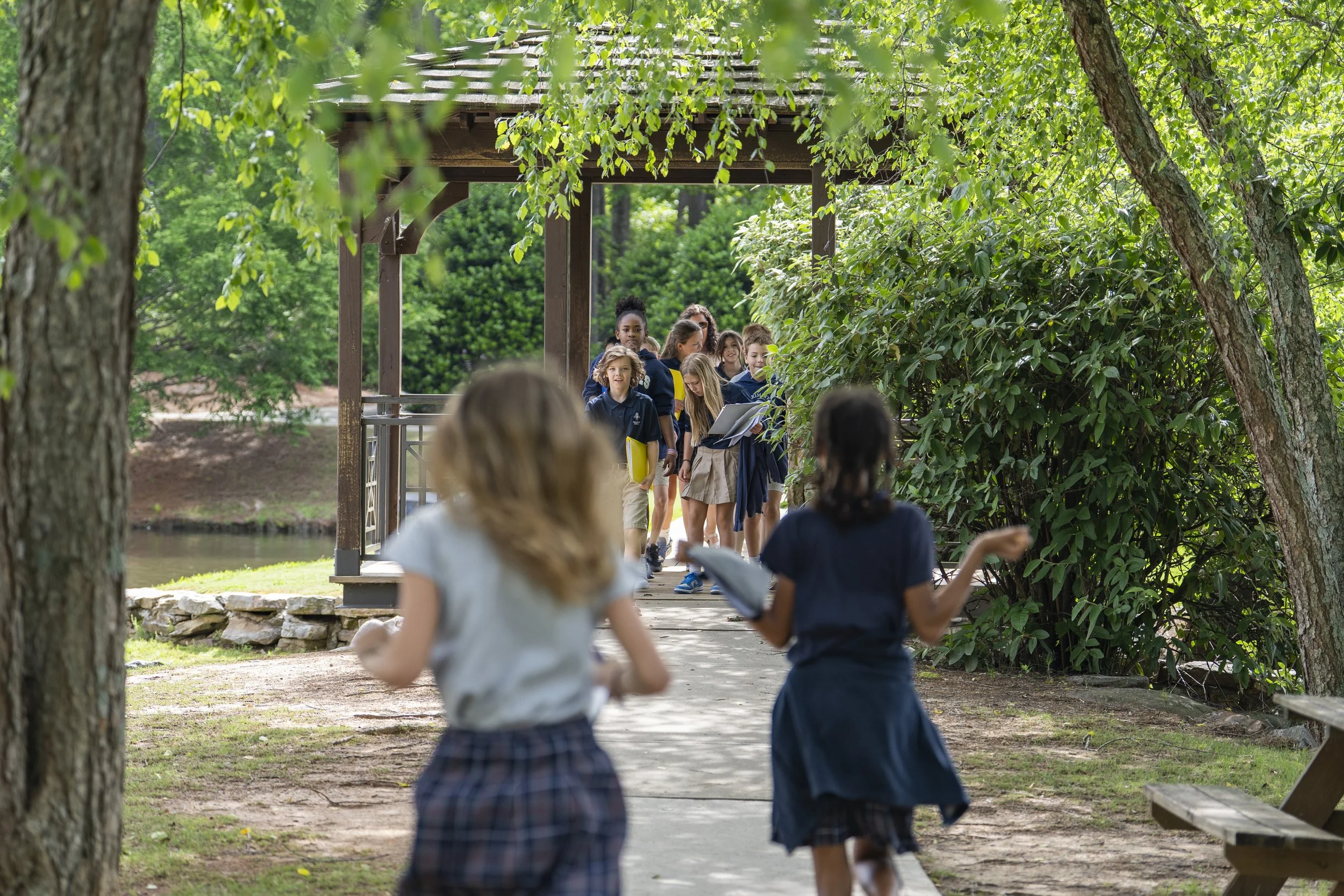Teaching Our Children to Live, Work, and Play Together
When insecurities arise, We are called to remind our children who they are in christ.
By rebecca Little, lower elementary principal
As with any other year at school, the struggles of children learning to live, work, and play together is always the same. With each developmental stage there are challenges of how to be a friend, how to play together with all different levels of athleticism, how to manage competitive natures, how to navigate cliques, and the list can go on and on.
When we encounter opportunities to coach children through these types of challenges, it is important to remember that these issues are part of “growing up” and preparation for life.
A HEALTHY PERSPECTIVE
Understanding the social and emotional stages of children can help us as adults know if what our children are experiencing is normal for their age and gives us a healthy perspective of how to proceed in teaching and admonishing them.
To give you an idea of what to expect at different social and emotional developmental stages, below is a brief snapshot from the book “Yardsticks” by Chip Wood.
Ages 5-8:
More interactive play with one another
Imaginary play remaining strong
A strong sense of right and wrong, which leads them to sometimes tell adults about classmates’ behavior
More competitiveness
Bossy or critical attitudes
Moodiness, shyness, or sulkiness
Preference of playing with one friend, but that friend may change often
Idea that “nobody likes me”
More independence from parents
Ages 8-11:
Stronger and more complex friendships
More emotional importance placed on friends
More peer pressure
Impatience and frustration
Worry, needing adult lightheartedness to relieve anxiety
Criticism of self and others
Ability to resolve friendship and fairness issues
Competitive spirit, with the ability to work in groups but often with arguing
Ages 11-14:
Need for reasonable amount of time to socialize with peers
Desire to test limits and rules
Love of challenge of competition
Inclusion/exclusion issues
Moodiness, preoccupation with self, sensitivity, and flares with anger
Development of new friendships
More care about peers’ opinions than those of parents and teachers
Help from peers with schoolwork
Close friendships and cliques for girls; traveling in small groups for boys
SEEING THE ROOT OF THEIR BEHAVIOR
Knowing these common developmental characteristics is helpful as our children enter each of these ages and experience conflicts and insecurities. It is our job as parents to acknowledge their feelings and comfort them, but more importantly, we need to speak to their hearts and help them see the root of their behaviors or reactions.
What is the underlying sin? Pointing them to scripture that speaks to the sin and the way we are to respond to others in a manner of respect, Christ-like love, and with a heart for reconciliation.
This is not a one-and-done occurrence. There will be many times in a child’s life that he or she will need to be taught the life skills of being in community. Only Jesus can change hearts, but we are called to continue to lead our children as they grow and mature by pointing them to scripture and disciplining when needed.
Let’s face it, even we as adults need to coach ourselves with these same truths about relationships and respecting others!
RECOGNIZING WHO THEY ARE IN CHRIST
When the hurt, fear, and insecurities arise, it is also our responsibility to remind our children that they are uniquely made by our God and that He has a plan for their life. As Jeremiah 29:11 states, “For I know the plans I have for you, declares the Lord, plans for welfare and not for evil, to give you a future and a hope.”
It is essential to teach our children that all relationships will have bumps along the way and how to respond based on who they are in Christ.
Pray for God to reveal to you your child’s strengths and uniqueness so that you are equipped to reassure them that they are fearfully and wonderfully made by giving them specific examples.











Be encouraged to lead your children toward a life of knowing and loving stories—listening, reading, writing, illustrating, and experiencing them in their own unique ways.